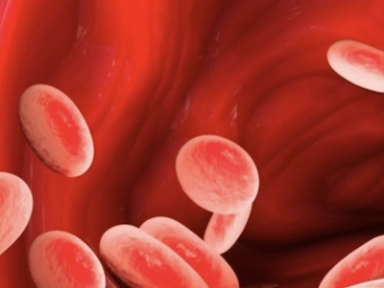Perceptions and Barriers on the use of PCSK9 inhibitors
Perceptions and barriers relating to proprotein subtilisin/kexin type 9 inhibitors in patients with heterozygous familial hypercholesterolemia.
Key Takeaway
In patients with HeFH, PCSK9i is the most preferred therapy among patients on maximally tolerated statin, followed by ezetimibe, diet and exercise.
Likelihood of prescribing PCSK9i:
- Cardiologists
- Private practice providers
- In patients with/without ASCVD needing additional LDL-C reduction beyond a statin
Difficulty in prescribing PCSK9i:
- Rural setting
- In patients with/without ASCVD needing additional LDL-C reduction beyond a statin
- Complicated, time-consuming process and PCSK9i cost
Why This Matters
- Current guidelines recommend add-on PCSK9i therapy for additional LDL-C lowering beyond statins
- Limited information available regarding physicians’ attitudes, practices, and barriers to treatment of HeFH.
Study Design
- Largest US national online survey conducted by NLA included cardiologists (n=500) and PCPs (n=500) for the use of pcsk9i in patients with HeFH, and barriers to its prescription
Inclusion Criteria:
- Licensed physicians, currently practicing, prescribing medications, and reporting caring for patients with a baseline LDL-C ≥190 mg/dL
Exclusion Criteria:
- Physicians self-identified as lipid specialists*
- Expected to be knowledgeable about HeFH,
- Pediatricians,
- Certified by the American Board of Clinical Lipidology or Accreditation Council for Clinical Lipidology
Key Results
- 1,000 physicians completed the online survey (30-questions)
- Specialty†: Family medicine, internal medicine, general practitioners
- Practice location‡: Suburban, urban, rural
- Practice setting§: Private, health system, academic, Veterans Affairs/government health, system/other
- PCSK9i, followed by ezetimibe, diet and exercise were the most preferred therapies in patients on maximally tolerated statin therapy needing additional LDL-C lowering
Attitudes and Experience with HeFH Treatment (PCPS vs Cardiologists):
- High-intensity statin for HeFH patient with untreated LDL-C ≥190 mg/dL: 64.8% vs 68.6%,(P = 0.04)
- PCSK9i for HeFH patient on maximum statin therapy needing additional LDL-C lowering: 48.4% vs 58.2%, (P <0.01)
- PCSK9i in adult with HeFH on maximum statin therapy, with/without ASCVD: 66.0% vs 87.8%, (P <0.0001) or 51.0% vs 70.2%,(P <0.0001)
Barriers Encountered With PCSKi (PCPs vs Cardiologists):
- Complexity of pre-authorization process: 34.2% vs 24.7%, (P <0.05)
- Time taken for pre-authorization process: 27.8% for both, (P <0.05)
- PCSK9i expensive cost: 12% vs 21.9%, (P <0.01)
- Other barriers: Insurance denials, unwillingness to take injectables, difficulty in documenting a clinical diagnosis of HeFH
PCSK9i Prescription
- Odds of prescribing¶:
- PCP vs cardiologists: OR = 0.46, (95% CI = 0.34-0.63)
- Private vs academic practice providers: OR = 1.53,(95% CI = 1.02-2.28)
- Odds of difficulty in prescribing#:
- Urban vs rural setting: OR = 0.56, (95% CI = 0.34- 0.93) diagnosis of HeFH
Limitations
- No information on respondents’ demographics such as age, gender, or ethnicity
- Exclusion of lipid specialists with greater knowledge of HeFH
- Results differed if PCP-identified HeFH patient was referred to a lipid specialist
- Bias towards those interested in dyslipidemia
* Including endocrinologists.
† Family medicine = 46%, internal medicine = 46, general practitioners = 8%
‡ Suburban = 53%, urban = 37%, rural = 10%
§ Private = 57%, health system = 24%, academic setting = 17%, Veterans Affairs/government health system/other = 1% each.
¶ PCSK9i prescribers in a HeFH patient with (OR = 3.86 [2.57-5.78]) or without (OR = 1.96 [1.40-2.72]) ASCVD on maximum statin needing additional LDL-C lowering.
# PCKS9i prescribers in a HeFH patient with (OR = 2.80 [1.74-4.49]) or without (1.43 [1.02-2.02]) ASCVD on maximum statin needing additional LDL-C lowering.
ASCVD, atherosclerotic cardiovascular disease; CI, confidence interval; HeFH, heterozygous familial hypercholesterolemia; LDL-C, low density lipoproteincholesterol; NLA, National Lipid Association; OR, odds ratio; PCP, primary care physician; PCSK9i, proprotein subtilisin/kexin type 9 inhibitors.
- Wong ND, Bang M, Block RC, Peterson ALH, Karalis DG. Perceptions and Barriers on the Use of Proprotein Subtilisin/Kexin Type 9 Inhibitors in Heterozygous Familial Hypercholesterolemia (From a Survey of Primary Care Physicians and Cardiologists). Am J Cardiol. 2021;152:57–62. doi: 10.1016/j.amjcard.2021.04.034. PMID: 34147211.

.webp/jcr:content/jcr_content%20(15).webp)


.webp/jcr:content/jcr_content%20(9).webp)